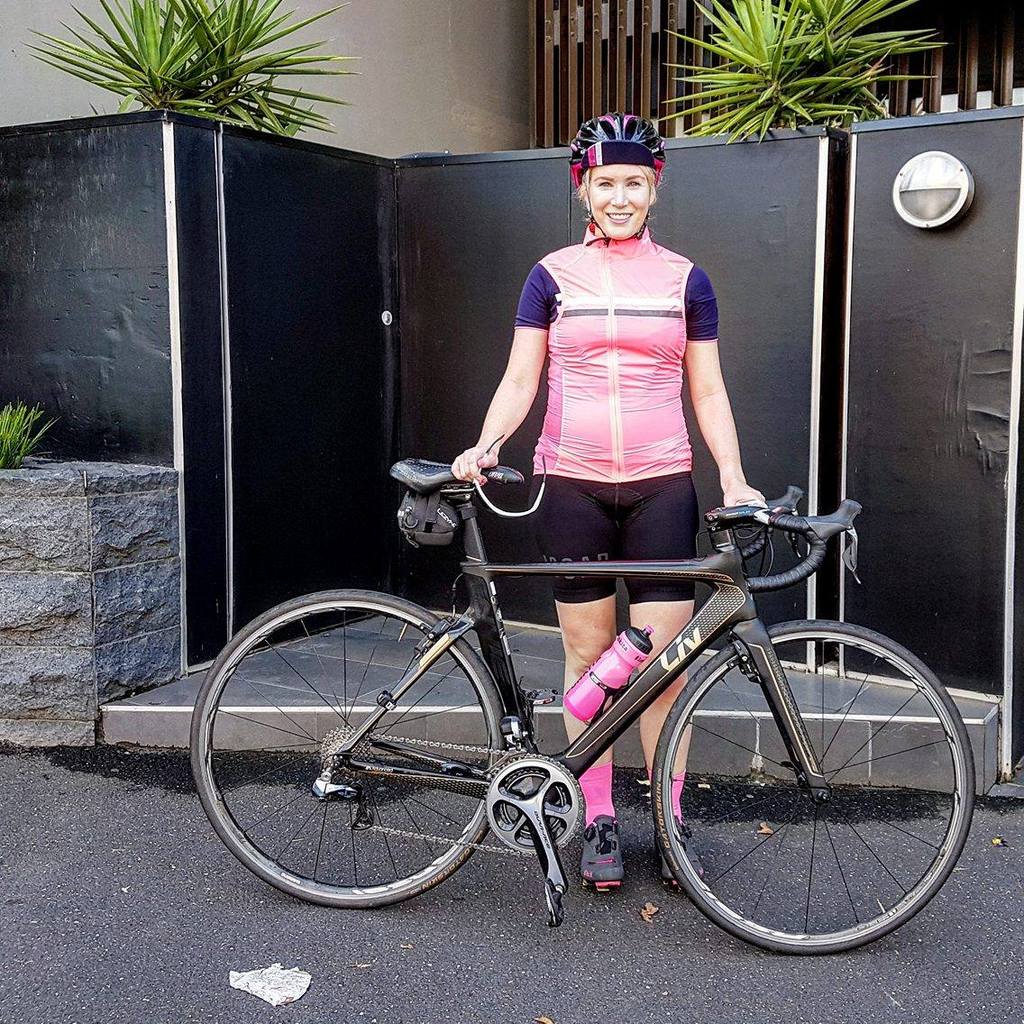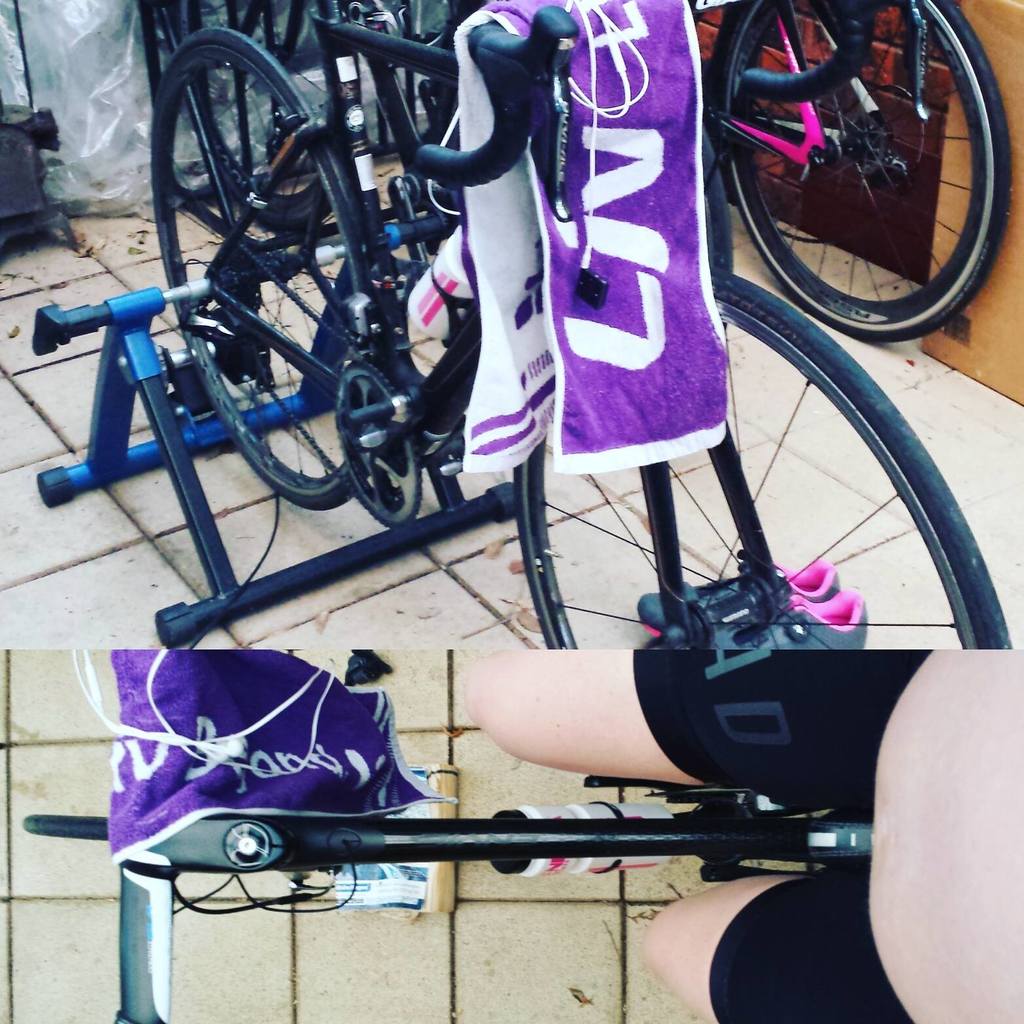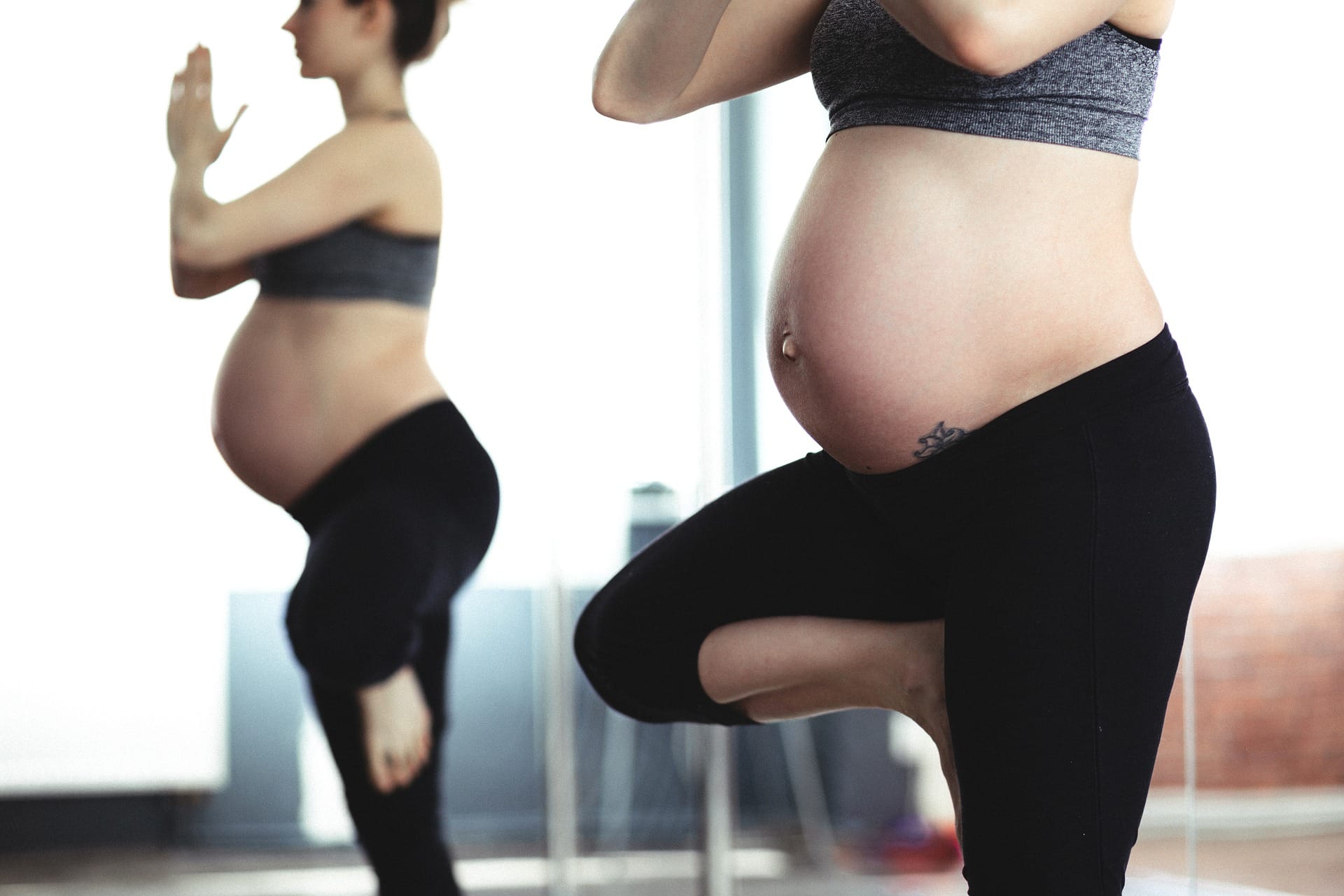When there’s no big race in sight, it can be hard to stay motivated during training, especially when your body is rapidly changing during pregnancy. Trizone caught up with Liz Blatchford and Dayna Wilkie, an age grouper who maintained her momentum during pregnancy and even completed a race thanks to a new motivation.
Breaking both arms delays half Ironman dreams
“I’ve done two seasons of short course racing, almost three, but I broke both my arms in the third season,” laughed Dayna. “I was training for my first half Ironman, Challenge Shepparton, and was out for a bike ride. The guy in front of me’s chain fell off, and since I was on his wheel, I slammed the brakes and went straight over the handlebars and broke both my arms.”
After her accident in October, Dayna spent a few months recuperating, with the doctor telling her she shouldn’t be riding on the road until the following February. “We were going on our honeymoon in January and we planned on trying for a baby straight away.
Before my accident though I’d been training for a whole year, and I wanted to race before getting pregnant!”
Ironman 70.3 Busselton goes perfectly
Dayna’s physio and coach at Holistic Endurance decided she’d be ready for her first Ironman 70.3 in May in Busselton. “I did my first half in WA, there were no Melbourne races left!” laughed Dayna. “I finished in just over five hours.”
“It was one of those races where everything goes to plan and you feel really good the whole way. I was so happy with the race I decided we could try for a baby now.”
Racing while pregnant
Unsure how long it would take for her to get pregnant, Dayna Wilkie signed up to a half marathon. “I got pregnant straight away and found out at four weeks!” said Dayna, “as soon as I found out I told my coach. She has a right to know when she’s writing my program so she knows for my training.”
Dayna had signed up to the half marathon, and she wasn’t going to give away her spot, so she downgraded to a 10km. “I was ten weeks pregnantcy, and I tried to go at moderate intensity and not smash myself,” said Dayna.
Like any triathlete, going easy doesn’t come easily to Dayna.

“In hindsight, I don’t think I’ll race next time I’m pregnant. I found it really hard not to be competitive, yet still enjoy racing”
Training alterations for pregnancy
“In the pool I was allowed to do everything I used to do, except tumble turns,” Dayna told Trizone, “they were pretty awkward!” Dayna Wilkie swam throughout her entire pregnancy with no issues. It was her running and cycling she had to change, plus the addition of a much slower more conscious workout style.
Running doesn’t work for everyone
Running was no problem for Wilkie until her 21st week, when she started to experience the common issue of pelvic pressure. “My doctor told me it was probably time to stop running, so I did power walks, hill repeats and stair repeats,” Dayna told Trizone.
Liz Blatchford had the same experience, “I got a really unstable pelvis really early on, around halfway. That was slightly frustrating as I’d had so long off running after injury,” Blatchford told Trizone.
“I’d just got back to some running before my pregnancy, but at 21 weeks, it was really painful. Emma [Snowsill] one of my best friends, she ran until the week before she gave birth, but my body wasn’t letting me.”
Dayna found there was a lot more she could do than run though. “I also did all my cycling efforts on the indoor trainer. My coach has some experience working with women who are pregnant, and she’s now pregnant herself, so she gave me a really good program.” Similarly, Blatchford kept up her swimming and cycling too. “I rode for as long as I could comfortably,” said Liz, “the last few months was mostly swimming, Pilates and walking.”
During pregnancy, Sports Medicine Australia says those who exercised before pregnancy can maintain a moderate to vigorous intensity workout plan. This essentially means that you must be able to talk but not sing. “I definitely trained hard, but it was not as hard as I had before I got pregnant,” said Dayna.
Pregnancy Pilates adds concentration to training
“My doctor recommended I start Pilates during my pregnancy and i really enjoyed it. You really have to focus on what you’re doing. It’s an hour-long class and there is lots to get through,” said Dayna. “Because my pelvic floor wasn’t very strong after looking at it on ultra sound, it was really important I work on that too, even though I never had any continence issues,” Dayna told Trizone.
“In hindsight, I would have worked on my pelvic floor before I got pregnant, but you never really know how strong your is until you get pregnant and assess it”
Liz Blatchford did Pilates throughout her career, and continued it long into her pregnancy too. “There’ so much you’re told you can’t do when you’re pregnant, so it was nice to have these physios who taught me pilates telling me all the things I could do!”
Motivation to train while pregnant – It’s not about racing
During pregnancy, there’s no imminent race to motivate athletes, so motivation can be tough.
“Sometimes I’d set myself up on the trainer and thing ‘what’s the point?’” Dayna told Trizone. “I have no race coming up, why would I bother?

“Initially it can be hard to put all these hours into training when there’s no end game,” said Dayna. “Triathlon training is a lot so if you don’t have that motivation it’s hard. You know your fitness will go down, so you basically have to find a new source of motivation.” For triathletes who train during pregnancy, considering the benefits to both their baby and themselves can be the driving factor.
“Training during pregnancy isn’t just good for your baby, but it’s also really good for your mental health. I’ve had no post-partum issues, and I really think that’s why”
Liz Blatchford found out she was pregnant in Kona, and her motivation changed from then onwards. “I had to be a bit careful because Kona is so hot, and overheating is something to think about,” said Liz. “Whenever I was going out training, I’d just assess my priorities, and of course every time the baby was my number one.”
“That means I didn’t go riding when the roads were busy, and if it was really hot I wouldn’t run. I remembered it didn’t matter if I couldn’t ride that day, I’d run or swim. My priority dictated what changed,” Liz told Trizone.
While Dayna’s body told her training was the right thing during her pregnancy, here are a few proven benefits to exercising while pregnant.
Sports Medicine Australia’s proven benefits of exercise while pregnant:
- Improved muscular strength and endurance.
- Improved cardiovascular function and physical fitness.
- Decreased risk of pregnancy related complications such as pregnancy-induced
- Hypertension and pre-eclampsia.
- Reduced back and pelvic pain.
- Reduced fatigue, stress, anxiety and depression.
- Decrease in excessive gestational weight gain and post-partum weight retention.
- Fewer delivery complications in women who are active during pregnancy.
- Prevention and management of urinary incontinence.
Nutrition during pregnancy
“It’s definitely not eating for two like some people say,” said Dayna, “you only need an extra 200 calories, or around that; it’s not much. I found I was eating the same amount but because my training was decreasing, I was getting a bit extra.”
Listening to your body is key
It’s so important to keep moving during pregnancy, and with Sports Medicine Australia’s recent revised recommendations, exercise is one of the most important aspects of pregnancy. While there are plenty of guidelines and women’s health physiotherapists to help you keep moving, Dayna says it helps to listen to your body.
“Cravings really told me what I needed,” said Dayna. “Your body really tells you what to do. I just listened to what my body wanted. My doctor said to workout and do what felt good, and I did. I stopped running when I was getting pain, but everything else felt really good so I kept it up. I kept pushing myself, not to the extreme, but working moderately hard.”
Blatchford continued swimming throughout her pregnancy, doing 3.5km swims in just one hour, working hard. “Swimming was the one thing that kept me sane,” said Liz. “Listening to my older sister, and all my friends who have had kids has been really helpful.”
Triathletes are the exception to the rule that pregnant women don’t stay active enough, but the benefits to activity during exercise is incredibly compelling, and evident in Dayna’s experiences. Since we spoke, Dayna has had her little baby Isla and is now back to training. Check back in soon to discover how to get back to training after pregnancy.








